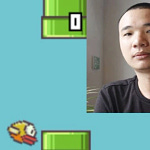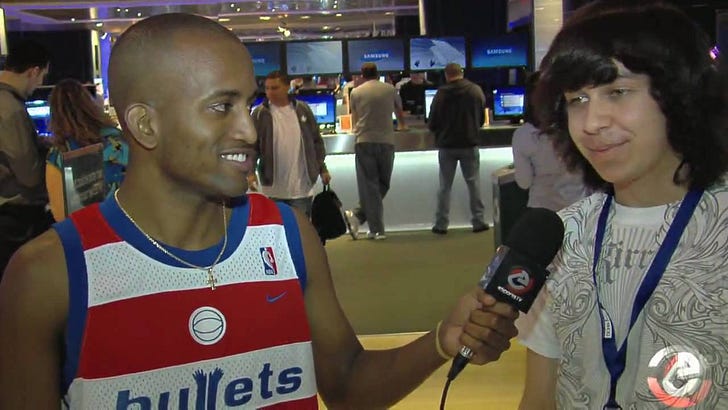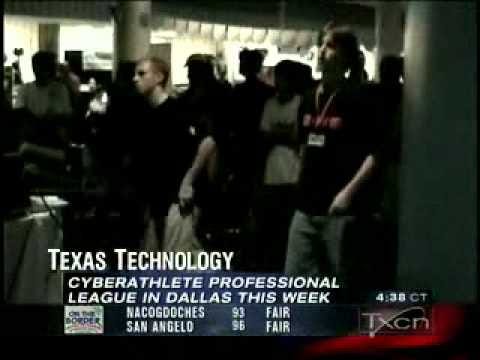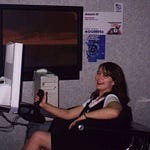This post is part of a longform project I’m serializing exclusively in my newsletter, Disruptor. It’s a follow-up to my first book, Masters of Doom: How Two Guys Built an Empire and Transformed Pop Culture, and it’s called Masters of Disruption: How the Gamer Generation Built the Future. You can find the table of contents, as it unfolds, here. To follow along, please subscribe below. Thanks!
This story of mine, “Shades of Doom,” originally appeared in On magazine, May 21, 2001
A growling, mutant hound chases me down a corridor. I duck into a nearby wind tunnel before I’m turned into Cujo’s biscuit. Just as the hell beast hurls by, I whip around with my shotgun and unleash a few rounds - but to no avail. The monster keeps coming. He’s inching closer, though I can’t see him. The room is pitch black. The dog is pitch black. In fact, everything is pitch black in the computer game I’m playing. There are no graphics in this first person shooter, Shades of Doom, there are only sounds. That’s because the guy who programmed it and the people intended to play it are blind.
Shades of Doom is the latest salvo from one of the most unlikely and elusive subcultures online: blind gamers. Small in numbers, but high in passion, they create and play audio-based computer games. The game play is consistent throughout the range of titles: players listen to cues, then type their response with a regular computer keyboard. No vision required.
The games are as varied as the blind population. Some gamers prefer so-called “interactive fiction” which lets them dictate various paths of an unfolding narrative (say “you come to a path in the road, do you want to go right or left?”). Others, especially senior citizens, play audio versions of parlor games like cards or chess. And there are even some who prefer to tackle the ultimate challenge: playing graphical console games like those for PlayStation 2 or Nintendo 64 by sound alone. “I've gotten very good at fighting games,” boasts Jay Pellis, a blind gamer who says it doesn’t long to learn the sounds, kicks, and cues of a graphical game. “I've beat many a sighted person,” he adds.
Now new technologies and communal innovation are spawning the next generation of games for the blind like the upcoming Shades of Doom. Using three dimensional audio and an almost cinematic approach, these aren’t just simple diversions, they’re complex worlds. On one level, the games are all about entertainment. But, they’re also about something much more: the mission to encourage more of the 45 million blind people around the world to use computers and find a place in the burgeoning digital culture.
“If you see a blind person having fun with computers that helps demystify blindness,” says Curtis Chong, director of technology for the National Federation of the Blind, “it helps people to recognize that blindness is not as debilitating as they might think.” Just ask David Greenwood.
Like a lot of guys, David Greenwood got hooked on Doom when it came out in 1993. Greenwood had been an avid gamer his whole life in Toronto, moving on from early text-based computers games like Adventure and Star Trek to early home arcade style games for the Atari 2600. But when Doom hit, Greenwood was blown away by the visceral first person point of view, the rush of playing a soldier who was running down hallways hunting down demons from hell. “There was nothing better than the first person perspective,” he recalls, “it was like being right there.”
Soon Greenwood was having trouble with his own point of view. Due to a deterioration of the retina, Greenwood’s vision was rapidly declining. Within a few years, the 44 year old could not see well enough to walk without a cane, let alone, play computer games. But with his training as a computer engineer, Greenwood was determined to keep his hobby alive.
Using a screen reader, a special program which converts text into audio speech, Greenwood ventured online to see what kinds of games existed for people in his condition. He wasn’t pleased with what he found: the same text-based adventures Greenwood had played at least a decade before, just tweaked a bit to work with screen reader wares. “My goal initially was to make something for myself because there wasn’t anything out there I wanted to play,” he says.
He wasn’t the only one. Carl Micla, a 41 year old programmer from Staten Island, New York, had been working on games since losing his vision in 1990. In 1997, Micla published what many consider to be the first audio games for the blind under the moniker PCS Games. The titles, though widely appreciated, focused more on simplistic audio games (based on classics like Pac Man or Monopoly) that appealed to what he considered to be the largest demographic: seniors. “They generally don’t touch the computers,” Micla says, “and if they do, they like nice easy game to play.”
Driven to make more dynamic gaming experiences, Greenwood created his first title Lone Wolf, an audio-only submarine simulation, using his screen reader and various game development programs. To play, gamers pecked out commands on their keyboard as they listened to a sub race through missions. For example, instead of looking through a periscope, a player would press the letter P on the keyboard and hear an audio reading of what was outside.
Lone Wolf sold a few hundred copies, respectable numbers given the niche market and the virtual absence of a retail outlet. For his next game, Greenwood wanted input from erudite gamers like himself. This is just what he found Audyssey: an online magazine for blind gamers run by then 22 year old Michael Feir. Feir, blind since birth, had cultivated an active discussion list, which included hundreds of participants from all walks of life: lawyers, musicians, even a senator.
Greenwood posted a message for the group: how would you all like to help me build an arcade style game for the blind which uses rich 3D sound? Something more like…Doom! The answers flooded in with a resounding yes. “Everybody wants the fast action arcade rush,” says Feir.
“The people on the list had heard from sighted friends or the media about games like Doom and thought it was unfortunate they couldn’t play them,” Greenwood adds, “For lot of them, they were resigned to that these were very visual games and there was no way they could play them without sight. It was like wanting to be an airline pilot, they thought, something that’s just not possible.”
Together, Greenwood and the Audyssey members discussed and developed ideas for the changing that notion for good. Greenwood put in hours every night after coming home from work. The end product, it was determined, would include nine levels with a variety of monsters, zombies, and, for the requisite b-movie thrills, a mutant dog. But it was the little atmospheric details that would most bring the world to life: the sound of a refrigerator buzzing in the distance, a toilet flushing down a hall.
Because the game would subsist entirely on audio, Greenwood realized that he had to be meticulous about providing navigational cues. Otherwise players would spend hours just walking into walls. Inevitably, he had to make some concessions to real world physics. The most notable of which was to include the sound of wind blowing down several different hallways at once to let the player know where to turn.
By the end, the teamwork exceed his own expectations. There was one notable suggestion, however, that wouldn’t make the cut. “Someone suggested that game be done from the first person point of view of a blind guy who’s walking around using a cane,” Greenwood recalls. “I thought that was a dumb idea. I want to free people. I want to make games that get you out of that rut. I want you to see with sound.”
Today, after four years and many prototypes, Shades of Doom is just weeks away from hitting the Web. Over the course of completing the game, however, Greenwood’s deteriorating condition forced him to leave his job as a engineer; he now lives off long term disability payments. Still he enjoys his many hobbies: sailing, golfing, and, most of all, coding and playing games.
Even some sighted gamers are now getting into his field. Zform, a startup run by two students from the University of Massachusetts at Amherst, is working on a title which would let sighted and blind players compete against each other online. Jeff Gibbons, 31 year old president of a company Bavisoft, didn’t let his ability to see impair his ability to make a popular game for the blind, Grizzly Gulch. Set in the old west, the game is vividly atmospheric as the player gambles in saloons and gun slings through the streets.
Ironically, Gibbons didn’t even intend to make a game for the blind, he was just setting off to make something that sighted people could play while relaxing with their eyes closed. After the game came out, however, he was flooded with letters from thankful blind players. “People write me every week asking about new games,” he says, “I wish I could put them out faster.”
As far as David Greenwood is concerned, you don’t have to be blind to make a game for the visually-impaired. You just have to love great games and, at least occasionally, be willing to shut your eyes.












